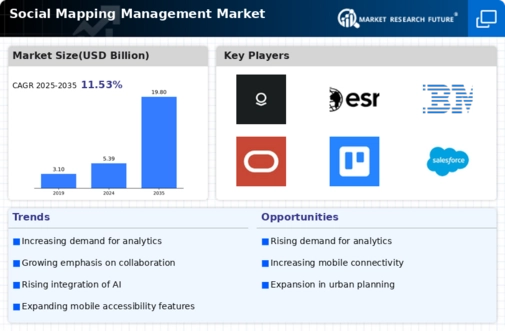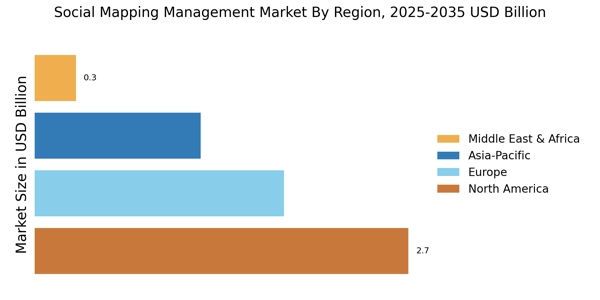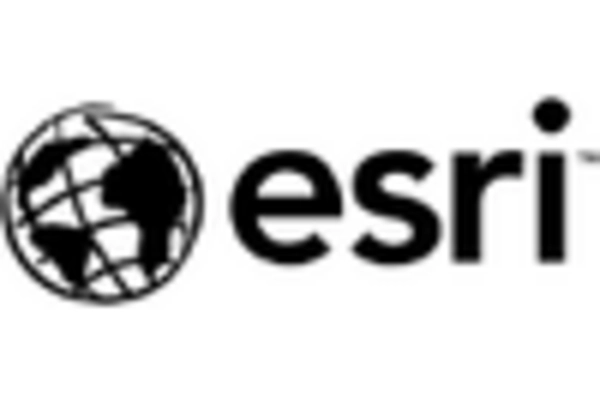Emergence of Smart Cities Initiatives
The emergence of smart cities initiatives is a crucial driver for the Social Mapping Management Market. As urban areas evolve into smart cities, the need for effective social mapping solutions becomes more pronounced. These initiatives often rely on comprehensive mapping data to optimize urban planning, resource allocation, and public services. Reports indicate that investments in smart city projects are expected to exceed USD 1 trillion by 2025. This trend suggests a growing market for social mapping tools that can support the development of intelligent urban environments, thereby enhancing the overall quality of life for residents.
Increased Focus on Community Engagement
The Social Mapping Management Market is significantly influenced by the heightened focus on community engagement. Organizations, particularly in the public sector, are utilizing social mapping to foster collaboration and communication with local communities. This approach not only enhances transparency but also encourages citizen participation in decision-making processes. Recent studies suggest that community-driven initiatives supported by social mapping tools can lead to a 30% increase in public satisfaction. As the demand for participatory governance rises, the Social Mapping Management Market is likely to expand, offering solutions that facilitate effective community interaction.
Rising Demand for Location-Based Services
The increasing reliance on location-based services is a pivotal driver for the Social Mapping Management Market. Businesses across various sectors, including retail, transportation, and tourism, are leveraging social mapping to enhance customer engagement and operational efficiency. According to recent data, the demand for location-based services is projected to grow at a compound annual growth rate of 25% over the next five years. This trend indicates a robust market potential for social mapping solutions that can provide real-time insights and facilitate better decision-making. As organizations seek to optimize their strategies through geographic data, the Social Mapping Management Market is likely to experience significant growth.
Growing Importance of Data-Driven Decision Making
In an era where data-driven decision making is paramount, the Social Mapping Management Market is witnessing a surge in demand. Organizations are increasingly recognizing the value of integrating social mapping tools to analyze spatial data and derive actionable insights. This shift is supported by findings that indicate companies utilizing data analytics are 5 times more likely to make faster decisions than their competitors. As businesses strive to enhance their strategic planning and operational efficiency, the Social Mapping Management Market is positioned to benefit from this trend, as it provides essential tools for visualizing and interpreting complex data.
Advancements in Geographic Information Systems (GIS)
Technological advancements in Geographic Information Systems (GIS) are propelling the Social Mapping Management Market forward. Innovations in GIS technology enable more sophisticated data analysis and visualization capabilities, allowing organizations to create detailed social maps that reflect real-time changes in demographics and behaviors. The market for GIS is expected to reach USD 14 billion by 2026, indicating a robust growth trajectory. As organizations increasingly adopt these advanced tools to enhance their mapping capabilities, the Social Mapping Management Market stands to gain from the integration of cutting-edge GIS technologies.


















Leave a Comment